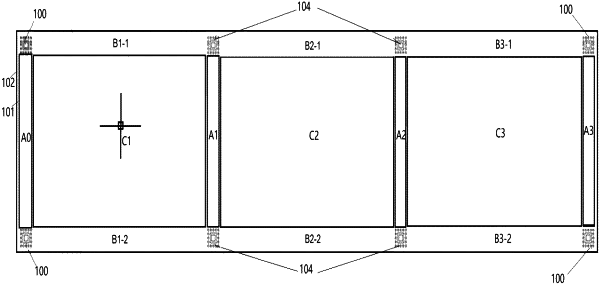| CPC G06K 19/06056 (2013.01) [G06K 19/06037 (2013.01); G06K 19/06075 (2013.01)] | 9 Claims |

|
1. A method, comprising:
obtaining a data code, and determining the number of positioning points based on the length of the data code;
partitioning data areas, and adjusting parameters of each of the data areas by adjusting the numbers of transverse unit QR codes and/or longitudinal unit QR codes;
drawing a QR code;
wherein at least one of the data areas is partitioned into an A data area, a B data area and a C data area;
wherein the capacities of the A data area, the B data area and the C data area meet a relationship of x*y+y:2x+(y−1)*(x−1):x*y, x and y respectively representing the number of the transverse unit QR codes and the number of the longitudinal unit QR codes;
wherein the number of the transverse unit QR codes and/or the number of the longitudinal unit QR codes are adjusted to determine the capacity of each of the data areas; and
wherein, the width L1 of the A data area and the length L2 of the B data area are adjustable;
wherein the numbers of the A data area, the B data area and the C data area, the length of the A data area and the width of the B data area are fixed values;
wherein the parameters of the C data area are obtained according to the parameters of the A data area and the B data area, and the total capacity of the data areas is calculated based on L1 and L2.
|